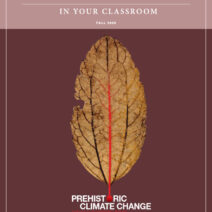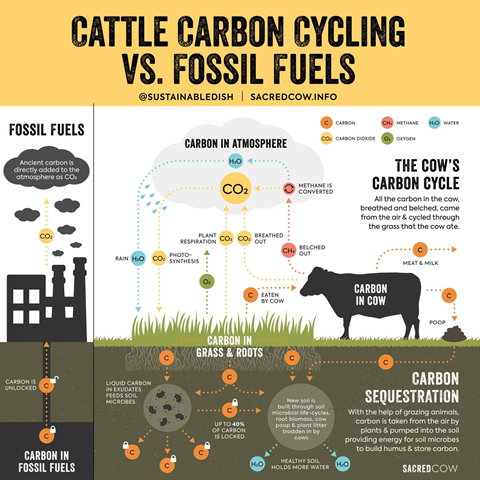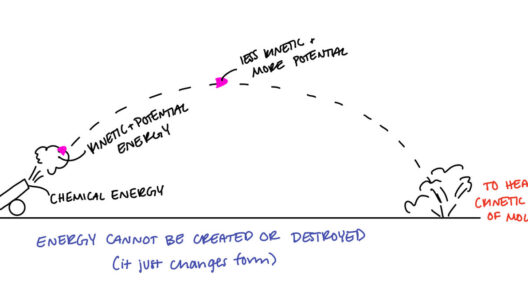When considering the dynamics of motion, a ubiquitous phenomenon often comes into play: air resistance. By virtue of its omnipresence, air resistance influences a wide variety of physical actions, from a simple drop of a feather to the sophisticated mechanics of aerodynamic vehicles. This phenomenon, while often overlooked, serves an integral role in understanding the broader implications surrounding the conservation of energy. Can we disentangle the intricate web of forces at play to decipher how air resistance interacts with the conservation of energy?
To commence, it is imperative to delineate what air resistance entails. Also known as drag, air resistance is a frictional force exerted by air against an object in motion. This resistance increases with speed and surface area; a flat surface will encounter more drag than a streamlined shape. The relationship between speed and drag introduces complex variables that must be factored into any analysis of motion and energy. As an object moves through the atmosphere, it must exert energy to counteract the air’s resistance, thus impacting the overall energy equations at work.
The principle of conservation of energy states that the total energy in a closed system remains constant. This principle encapsulates kinetic energy, potential energy, thermal energy, and more. When an object is propelled forward, it ideally converts potential energy into kinetic energy. However, once air resistance comes into play, a fascinating interplay emerges. The energy expended must now account for overcoming drag. Hence, while the total energy may appear constant, the accessible kinetic energy is diminished as a direct consequence of air resistance, revealing a nuanced truth: energy is transformed rather than lost.
At the heart of this transformation lies the work-energy theorem, which asserts that the work done by forces acting on an object equates to the change in its kinetic energy. In practical terms, as an object accelerates, it must perform work against air resistance. This work results in a transformation of kinetic energy into thermal energy, primarily due to friction between air molecules and the object’s surface. Thus, in scenarios where air resistance is significant, one can witness a decrease in the object’s speed and kinetic energy over time, as energy is converted into heat rather than remaining within the system for further acceleration.
Consider the implications of air resistance in contexts like sporting activities. For example, a cyclist negotiating a straight path experiences varying degrees of resistance based on speed, posture, and bike design. The energy expenditure to maintain velocity increases substantially due to drag forces, which leads to greater caloric consumption and fatigue. Conversely, a streamlined cycling posture minimizes air resistance, reflecting an astute strategy of energy conservation in sports. These situational choices provide an observable demonstration of how individuals may optimize performance through knowledge of the effects of drag.
In the realm of aerospace, the complexities expand further. Aircraft pilots must meticulously account for air resistance when planning takeoffs and landings. The dynamics of drag force, specifically, can significantly alter fuel efficiency and overall flight safety. Engineers have designed sophisticated aerodynamic structures that minimize drag, thereby enhancing the efficacy of energy usage during flight. This is not merely an engineering challenge; it translates into broader implications for conservation, as optimizing fuel consumption reduces greenhouse gas emissions and fosters sustainable aviation practices.
Moreover, understanding air resistance also extends to environmental concerns, especially in the context of vehicular travel. Cars designed with better aerodynamics can reduce air resistance, leading to improved fuel efficiency and lower fossil fuel consumption. This relationship accentuates the importance of innovative design tailored to conserve energy, thereby aligning transportation practices with green initiatives aimed at mitigating climate change. Herein lies a compelling intersection of physics and environmental stewardship, revealing how principles of motion can harmonize with ecological considerations.
As intriguing as these applications are, it is also essential to recognize that air resistance does not act uniformly. Its influence can vary based on altitude, atmospheric conditions, and velocity. The density of the air changes with altitude, impacting drag forces significantly. Additionally, turbulence, a phenomenon where air flows in an erratic manner, can result in unpredictable drag forces affecting flight paths and energy efficiency. These factors introduce layers of complexity to calculations attempting to predict motion in a natural environment, illustrating the unpredictability inherent in the relationship between air resistance and energy conservation.
Furthermore, not only does air resistance mitigate energy efficiency, but it also plays a pivotal role in the natural ecology. Birds, for instance, rely on their understanding of wing shapes and postures to navigate air currents, maximizing lift while minimizing drag during migration. This biological insight into air resistance promotes energy conservation in nature as these creatures journey for survival. It emphasizes an evolutionary adaptation that utilizes the phenomena of physics to thrive in varying environments.
In conclusion, air resistance significantly affects the conservation of energy, intertwining physical principles with a myriad of real-world applications and implications. While air resistance introduces a layer of complexity that challenges idealized models of motion, it also serves as a vital reminder of the dynamic interactions present in our environment. Engineers, athletes, and natural organisms alike can harness an understanding of drag to optimize energy usage, advocate for sustainability, and enhance overall performance. It becomes evident that by appreciating the role of air resistance within the framework of energy conservation, we unlock a deeper comprehension not just of motion, but of our relationship with energy itself.







